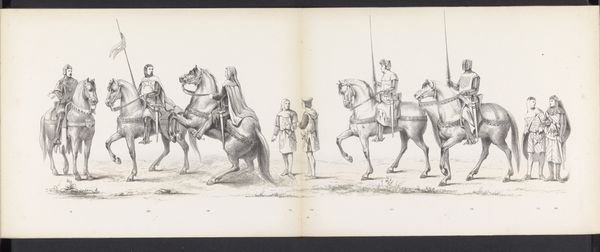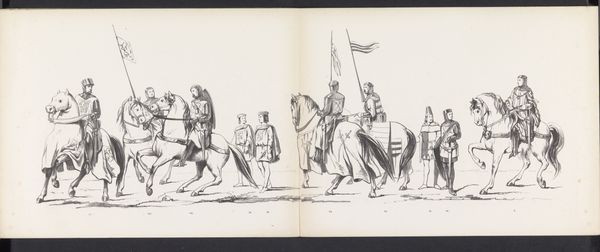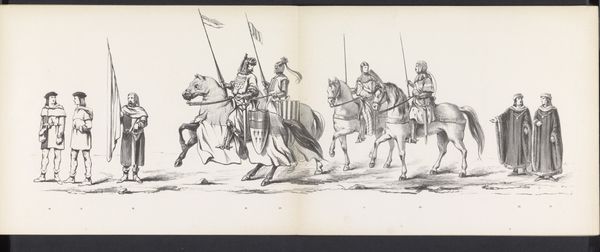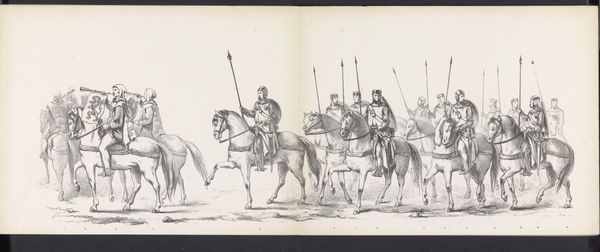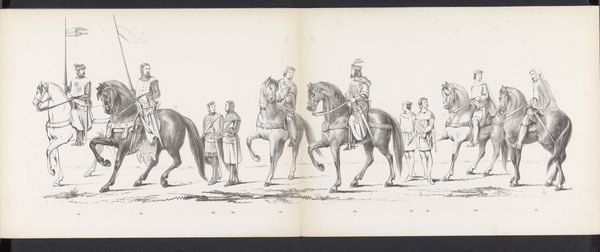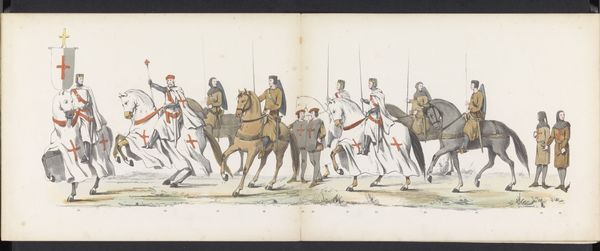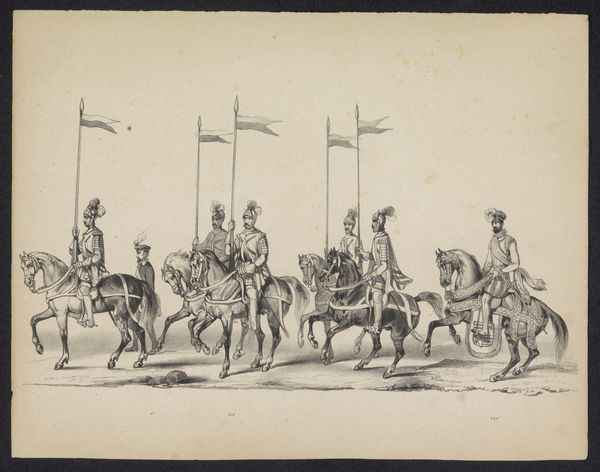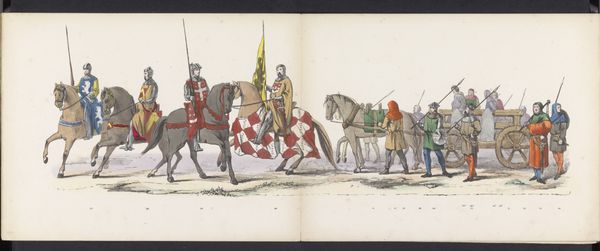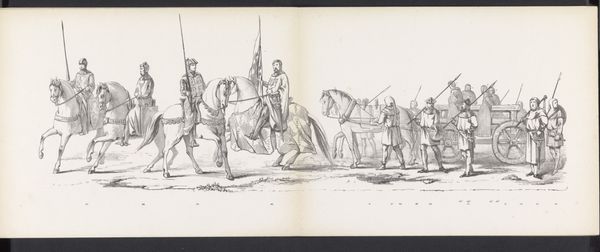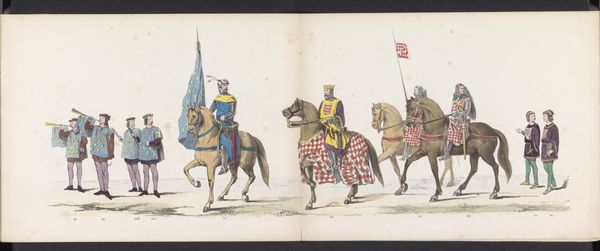
Maskerade van de Leidse studenten, 1865 (plaat 11) 1865
0:00
0:00
drawing, ink, pen
#
portrait
#
drawing
#
medieval
#
narrative-art
#
pen sketch
#
figuration
#
ink
#
pen
#
genre-painting
#
history-painting
#
academic-art
Dimensions: height 275 mm, width 720 mm
Copyright: Rijks Museum: Open Domain
Curator: This pen and ink drawing, executed in 1865 by Jan Daniël Cornelis Carel Willem baron de Constant Rebecque, is titled “Maskerade van de Leidse studenten, 1865 (plaat 11).” Editor: My initial impression is that it feels both stately and theatrical, like a carefully staged historical drama about class and status. There's an almost eerie quality to the figures, all depicted in rigid positions. Curator: Indeed. Note the artist’s precise rendering of the figures and their costumes. He uses hatching and cross-hatching to create subtle tonal variations, effectively suggesting the textures of the fabrics and armor. The composition follows academic art conventions. The lines of sight converge strategically toward the horsemen in the middle of the image to give them an ideal appearance. Editor: But it’s not simply about technical skill, is it? The context surrounding the parade it depicts raises critical questions. Were these really medieval figures, or were they student revelers costumed as medieval figures as the title suggest? Either interpretation demands we consider whose histories and traditions are being amplified, and whose are ignored, when thinking about depictions of "student life." What is it about that time, space, or class status that is valorized by way of referencing the distant past? Curator: I appreciate that insight. Zooming in on some key visual aspects, note the linear perspective directing our eye from the groups of walking men in the foreground towards the horsemen—how it subtly manipulates our gaze, guiding us through the parade's structure, or a particular element in the parade with importance. The careful modulation of light, and shadow, create depth while drawing our attention to those that matter: not only does he draw but, by means of representation, he directs. Editor: Representation is such a key theme! The figures look like archetypes, almost theatrical or even farcical; is there irony? Or is this the artist in some way trying to rewrite or make up a history of some long lost imagined or romantic past? In this light, does he valorize power, wealth, status, or rather take a shot at lampooning such hierarchies? There's a political and emotional complexity embedded in such historical masquerades that seems especially ripe for scrutiny today, because as with any procession, you must always ask yourself who gets to parade and who gets to watch? Curator: That tension is palpable. Thank you, these complementary perspectives provide a fuller appreciation for this drawing, opening doors to discussions that acknowledge both the artist’s technique and the social messages subtly encoded within the visual presentation. Editor: Indeed. Seeing the visual artistry and layers of societal power and critique coexisting enhances my experience, bringing both closer to us.
Comments
No comments
Be the first to comment and join the conversation on the ultimate creative platform.
